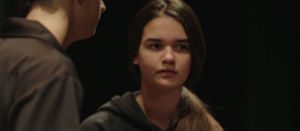By Deron Hamel
The scene is a play rehearsal. Two high-school students, a boy and a girl, are practising their parts. Suddenly, the girl pauses. She stares blankly, appearing lost in her thoughts. Several seconds pass. She then she resumes speaking, as though nothing has happened.
One of the students asks another if a teacher should be called.

The student, realizing what is happening, says “No … it’s fine.”
This is what an absence seizure looks like. The above description is from a video series recently created by Epilepsy Ontario to educate people about different types of seizures.
Absence seizures are a type of generalized seizure, but the features differ from tonic-clonic seizures, which are the more widely recognized type.
Often, absence seizures are mistaken for daydreaming. The person experiencing the seizure will stare blankly but nothing seems too out of the ordinary. Some people do have other features that could include eye movements or blinking. Most absence seizures last only five to 15 seconds. When the seizure is over, the person often does not realize what happened.
Absence seizures, which generally begin in childhood, usually do not require medical assistance, but it’s important for people to recognize what they look like and how to react.
“By the time someone notices that a person is having an absence seizure, the seizure is sometimes over,” explains Suzanne Nurse, Epilepsy Ontario’s director of information and client services.
But, Nurse adds, there are things people can do when they see someone having an absence seizure. For instance, if the person was involved in a conversation, information can be repeated, as they would have missed what was said. In a classroom setting, repeating information is also important so a student doesn’t miss out on valuable instruction.
If a person experiences a suspected absence seizure but does not have an epilepsy diagnosis, they need to be made aware of what happened. If suspected seizures happen to a student at school, parents should be alerted so they can consult with their child’s family doctor about the episodes.
The video is one of three recently created through a joint project of Epilepsy Ontario and Epilepsy Toronto with funding provided by Ontario Trillium Foundation. The other two videos examine tonic-clonic seizures and focal dyscognitive seizures.
Click here to watch all three videos.
If you have feedback on this story, or have a story of your own that you would like to share, please contact the newsroom at 800-294-0051, ext. 23, or e-mail deron(at)axiomnews.com. You can also leave a comment below.






